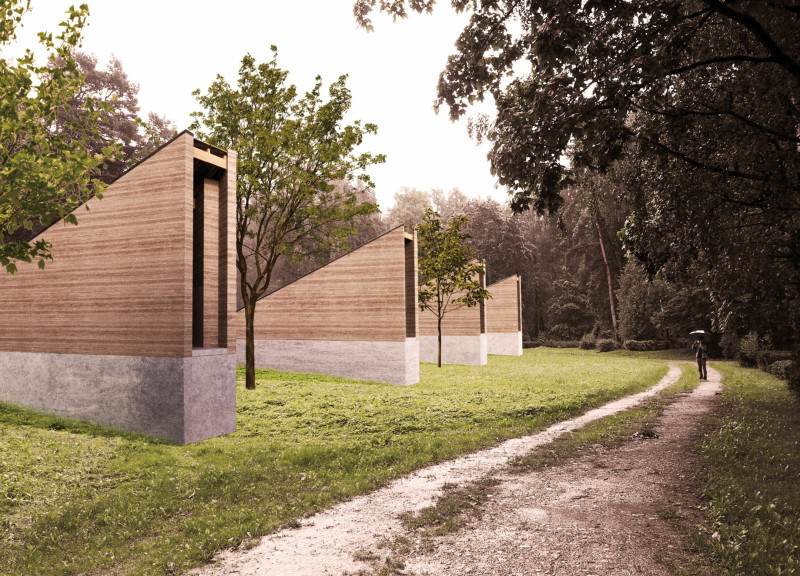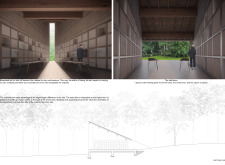5 key facts about this project
"Reunion" is a thoughtful response to changing funeral practices, particularly the rising preference for cremation. Located in Latvia, the design features a series of columbarium structures that each house 128 niches for honoring the departed. It employs an ecological approach, using rammed earth in its construction. This design emphasizes the idea of "Reunion With Mother Earth," connecting themes of remembrance with sustainable practices while reinterpreting the concept of burial.
Design Intent
The columbarium serves as a modern memorial, filling the void left by traditional columbariums. The buildings have distinct shapes, narrowing vertically on the eastern side and expanding horizontally on the western side. This configuration is designed to reduce the impact on surrounding cemetery spaces. Functional considerations are balanced with a rich spatial experience for those who visit.
Spatial Organization
The layout fosters contemplation and connection, allowing visitors to engage with their memories. The architecture creates an interplay of spaces that guide the experience, moving from one area to another. This design promotes reflection, ensuring that each individual can find a moment of peace among the memorials.
Geographical Context
The site’s topography is carefully integrated into the design. The east side is elevated, providing a platform that brings visitors closer to the memorials. This height enhances the connection between the living and the deceased. The buildings ascend toward the west, symbolizing a bridge between two worlds. The natural landscape and the architectural elements work together to create a meaningful place.
Material Selection
Sustainability plays a key role in material choices. Rammed earth is the primary material used for the walls, offering both strength and environmental responsibility. The niches are prefabricated from a combination of soil and concrete, ensuring durability while remaining mindful of ecological impact. Pine boarding and natural stone tiles add tactile quality and visual coherence to the project.
Details of the design reveal a careful merging of structure and nature. This thoughtful integration allows the buildings to exist harmoniously within their surroundings.






















































